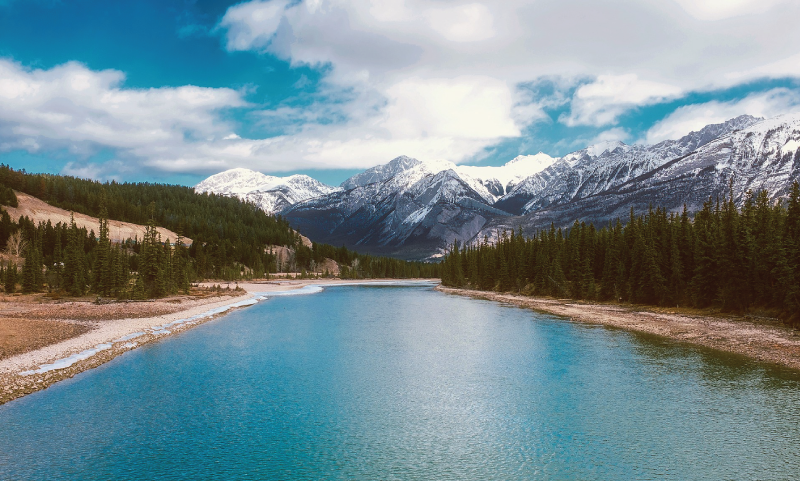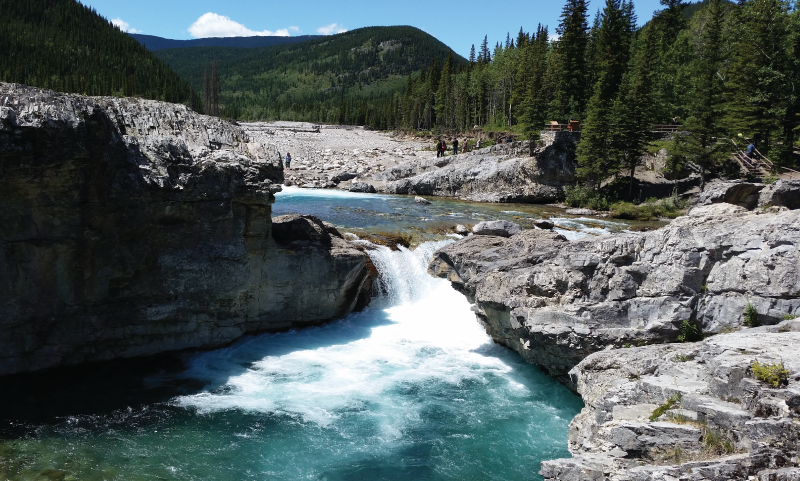Charity Spotlight: This blog post was provided by Brie Nelson, an Environmental Scientist at the Alberta WaterPortal Society, as part of our ongoing charity spotlight series.
Water is critical for sustaining livelihoods, human well-being, socio-economic development, and preserving ecosystems. Yet, very few Canadians recognize that water security is a pressing issue already impacting us all. It is easy for Canadians to assume that they have an almost endless supply of clean, fresh water. After all, we’re often told that Canada has some 20 percent of the world’s total freshwater resources. However, less than half of this water is “renewable”, and most of it is retained in lakes, underground aquifers, and glaciers. At the same time, more than half of Canada’s water drains northward into the Arctic Ocean and Hudson Bay, which makes this water unavailable to the 85 percent of the Canadian population who live along the country’s southern border. The remaining supply is therefore heavily used and affected by pollution from millions of Canadians concentrated along the country’s southern border.

So, what exactly is water security? Water security is the reliable access to enough clean, affordable water, but it also incorporates security from water risks including disease outbreaks and floods. Despite modern advances in water technology and efficiency, water security is among the most pressing issues of our time. The simultaneous challenges of increasing demand, aging infrastructure, climate variability, and compounding pollution threaten our water security from many different angles.
Water security issues are at the forefront of our minds due to recent events and conditions across Canada, including catastrophic flooding and long-standing boil-water advisories in many First Nations communities. During the Alberta floods of 2013, a total of 32 states of local emergency were declared and 28 emergency operations centers were activated. Numerous communities were placed under evacuation orders, and over 100,000 people were displaced. Total damage estimates exceeded $5 billion, making it the second costliest disaster in Canadian history. Boil-water advisories are common and often long-standing in First Nation communities in Canada. Two-thirds of all First Nation communities in Canada have been under at least one boil-water advisory at some time in the last decade. The Neskantaga First Nation in Ontario has experienced the longest boil water advisory that has been ongoing for 20 years. Under funding, aging and damaged infrastructure, and a lack of training in remote communities all contribute to boil-water advisories.
Understanding our Water Is Key to Water Security
Achieving water security for everyone in Canada is a complex issue that must be addressed through many strategies including government legislation, corporate initiatives, and individual actions. For most Canadians, clean water comes from their tap at home and they may not feel their water security is impacted by their decisions. But everything from water use habits and the products that go down the drain, to where developers are permitted to build impact our water security.
Understanding that increasing climate variability is already impacting our water security issues, and it is clear that Canada urgently needs robust and timely water related information available for everyone which is what the Alberta WaterPortal Society (WaterPortal) works to provide. As climate variability becomes central to water management across the world, the WaterPortal is taking a deeper dive into how water and climate are related, and what that relationship means for individuals, communities, and our population.

In an age of instantaneous, online information and polarized opinions, it is critical that Canadians have access to unbiased, accurate information about their water resources and future water security in order to make decisions and advocate for change. The WaterPortal has filled this gap since 2006 by providing easily accessible, free and online educational resources on historical, current, and future water issues in Alberta and across Canada. This content drives water-related discussions and public engagement on topics of water resources, water management, and flood and drought mitigation in Alberta that often apply across Canada. Working with a variety of partners and water experts, the Portal has published a wide range of content on key water issues that will be available as online resources for years to come. This online content attracts tens of thousands of users each year, from interested members of the public to dedicated water professionals seeking credible information sources.
About the Alberta WaterPortal Society
The WaterPortal publishes a variety of materials aimed at engaging and educating a broad audience. The materials include quizzes, graphics, blog articles, synthesized research results, and a daily water news feed. Recently, the WaterPortal produced a video about the interconnectedness of water, energy, food and communities to educate Canadians about water security and how important it is to our food supply.
For over a decade, the WaterPortal has been engaging online users by providing a continuous stream of factual and relevant water information. We envision a time when all Canadians understand their flood and drought risk, plan accordingly, know where their water comes from, and understand the many factors that impact our water quality and quantity, such as our changing climate.
To learn more about the Alberta WaterPortal Society, or to make a donation, please visit their Charity Profile Page. Plus, learn more about their Sustainability Fund here.
References:
- Safe drinking water on First Nations gets $4M boost from federal government
- What factors lead to First Nations boil water advisories? Recent study mines the data
- What is Water Security? Infographic
- Climate Change and Water Security
- 2013 Alberta floods
- Bad water: ‘Third World’ conditions on First Nations in Canada
Leave a Reply